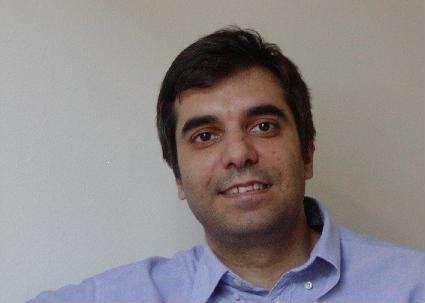Theoretical nanotechnology |
The recent progress in fabrication and characterization methods is closely related with elaborate theoretical analysis and simulation from first principles. The major goal of theory is to reduce the development costs, but also predict new phenomena and functionalities of the nanoworld.
|
Multiple scattering methods for electrons, photons, phonons |
Muliple scattering methods are used since decades to solve wave propagation. The concept is very efficient and the basic theory can be adapted to solve electron, photon or phonon propagation in complex media.
|
Photonics-Plasmonics |
Electromagnetic waves interact with periodic arrangements of metallic
or dielectric nanostructures giving rice to novel phenomena like frequency regions
where no light propagation is allowed (photonic band gaps) or even exotic
responce like negative refraction, but also subwavelength imaging.
Understanding, predicting and tayloring
such effects in the visible, and near infra-red would eventually lead to
novel ways to engineer light-matter interactions, minituarize optical cirquits,
and exploit near field effects that can revolutionize microscopy.
Read more
|
Nanoscale heat transport |
Downsizing the fuctional components of electronic cirquits has direct consequences
in elecronic, optical, magnetic properties. Heat transport in the nanoscale has drawn
less attention, but is also directly affected for sizes smaller than the heat carrier
mean free path. Such effects can be studied with atomistic classical molecular dynamics
simulations.
Read more
|
| Theoretical methods in electronic structure (last update 2003) |
The Korringa-Kohn-Rostoker Green function method
KKR manual (2002)
|
|
| Electronic transport in the nanoscale |
Nanocontacts - Nanowires
Tunneling magnetorsistance (TMR)
Electronic structure of surfaces
Scanning Tunneling Microscope simulations
Surface energetics
Electronic structure of defects
Ab initio electronic structure of defects including calculations of local structure and geometry of defects in semiconcuctors and metals.
Magnetic properties of defects in metals
Phonons
|
|
|
| |
|
|---|
|
 |

|
 |
Nikos Papanikolaou
 
Intitute of Microelectronics,NCSR Demokritos, Ag. Paraskevi, GR-153 10, Athens Greece. |
|
|
|





